The people who are crazy enough to think they can change the world are the ones who do.
Apple “Think Different” Campaign 1997
Enterprise leaders often consider how and when they should be thinking about innovation in their analytics and digital transformation efforts. But, times have changed. To keep pace in a rapidly changing business and technology environment, innovation is no longer a choice. It’s an imperative.
The market is being reshaped by technology changes in the areas of artificial intelligence, block-chain, and computing. Business models are also changing, as new platforms, direct-to-consumer models, and mobile innovations continue to shake up the market. All this change creates great opportunities for those that make innovation their operating imperative. To win today, leaders must build innovation into the core of their efforts from day one. Creating a strong integrated innovation engine is critical to analytics and digitization transformation success.
As you build out your own winning strategy and operating model, focus in on three key elements to build your innovation engine:
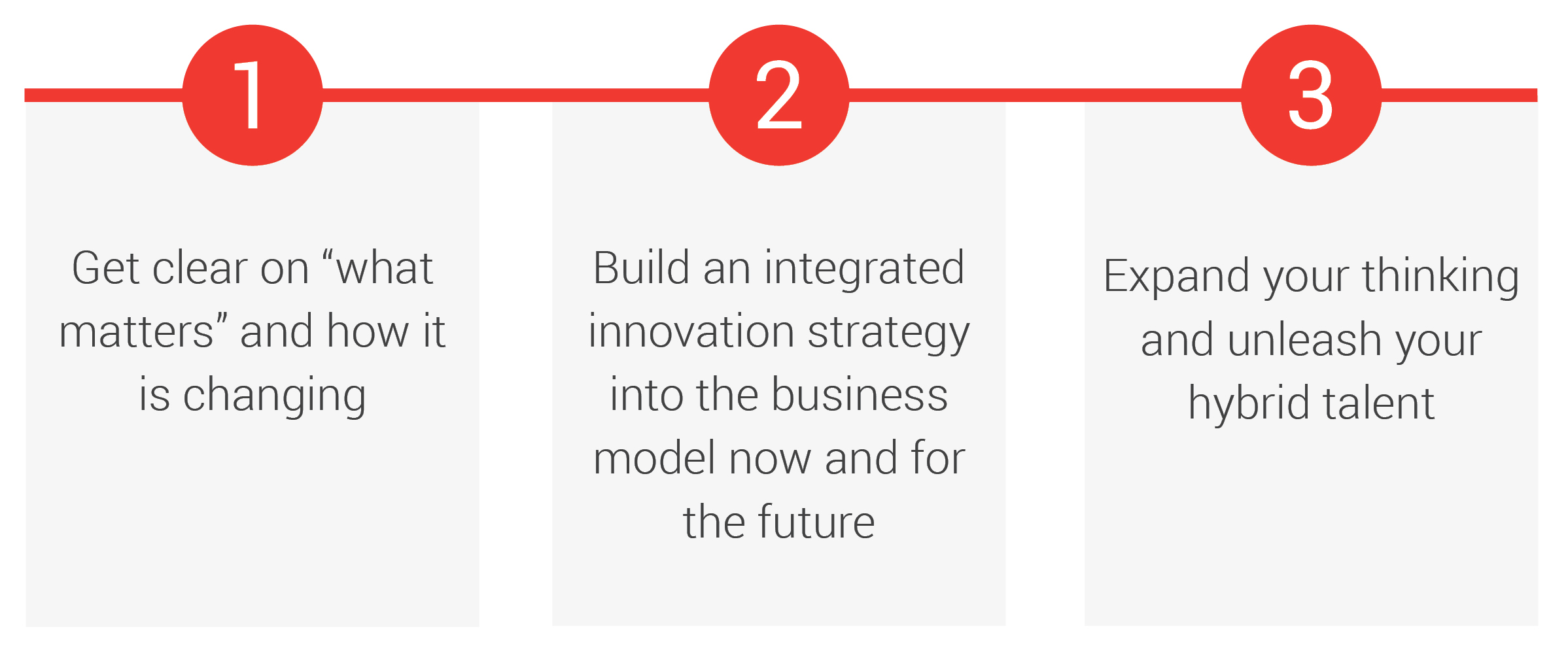
1. “What Matters” Is Changing
At any point in time, “what matters” and how it is changing is critical to your successful transformation. Some call it a landscape assessment, canvassing the industry, bringing the outside in, articulating your business model, or any other expression of understanding “what matters” in your company, industry, and category and how it is evolving now and in the coming years. The only thing for sure is that the forces impacting “what matters” are changing right now whether you know it and like it, or not!
In his seminal book, “What Really Matters”, John Pepper (Former P&G Chairman of the Board, President and Chief Executive Officer) shares the importance of this approach with respect to winning brands. He outlines the “Brand-Building Success Factors” that are required to create leadership brands and keep them young year after year: “It’s only when all of these factors are present – not three or four, but all of them – that we sustain and improve our record of creating and building leadership brands.” He defines the five “what matters” factors and how to shape the innovation engine and forces around them:
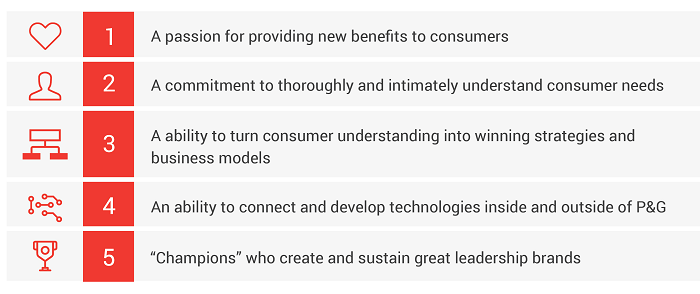
Interestingly, the last factor, talent, was and is a passion that John never stops innovating and investing in. Even now, many years after retiring from P&G, his coaching is as relevant as ever.
Evolving success factors in enterprise analytics: From 2010 to today
Let’s look at analytics and how AI, robotic process automation, and other success factor forces will shape your innovation engine. In 2010, MIT published an interesting chart: “Analytics, the new path to value.”
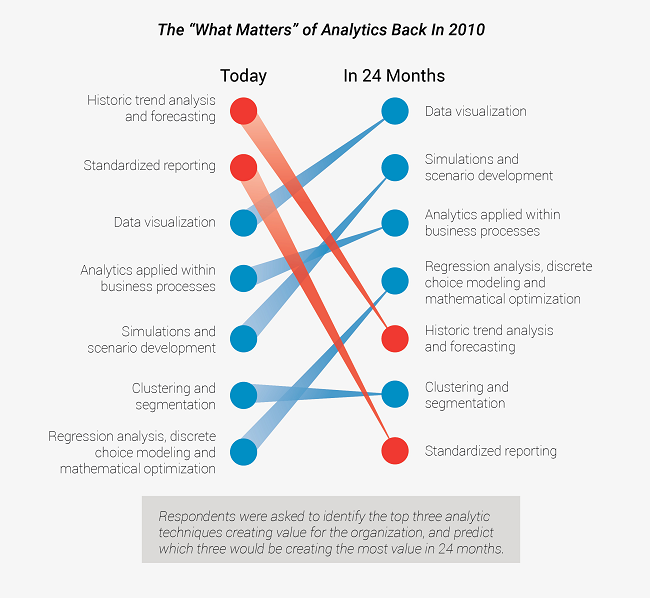
In 2010, this laid out key insights on where to drive innovation in leading analytics programs like P&G. At P&G we built the Business Sphere environment to harness real-time global data to power business-decision making. We began testing more advanced analytics at store/SKU level, created strategic partnerships with key players in these critical analytic domains, and drove significant impact across the businesses.
It’s very clear now that the “What Matters” forces are transforming in the analytics domain. The next evolution is taking shape, and it’s looking something like this:
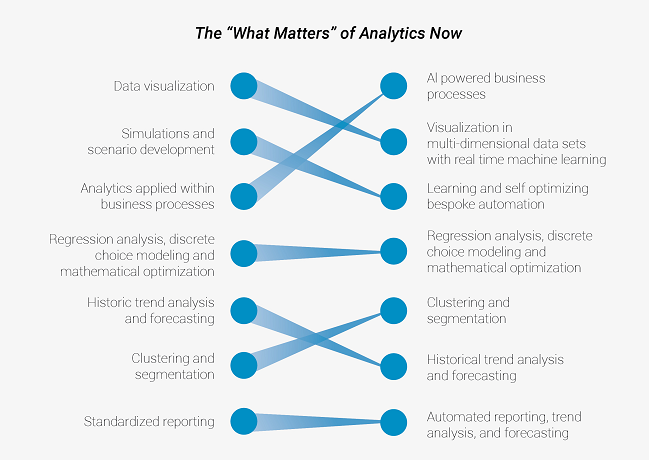
As you drive your own transformation, build your innovation efforts around “what matters” and the forces (e.g., AI) that are shaping them in the coming years. Leading analytic and digitally transforming companies will leverage both internal talent and strategic partners to create competitive advantage now and for the future.
The greatest danger for most of us is not that our aim is too high and we miss it, but that it is too low and we reach it.
Michelangelo
The decision isn’t about whether to embrace a new business model, but about when, how, and how fast to do it!
Filippo Passerini, Former P&G CIO & Global Shared Services President
2. Build an Integrated Innovation Strategy into Your Business Strategy
Like any good strategy, innovation also requires the rigor of making bespoke choices: where to play, how to win, capabilities needed, measuring success, management systems required, and your aspirational vision.
An integrated innovation strategy focuses across short and long-term objectives by focusing your innovation in three areas (tightly linked with your business model):

1. Innovation to lead the industry
This is sometimes called “sustaining innovation.” It is focused on your current products or solutions with intent to stay focused on new consumer trends (“Who” focused), vertical or horizontal expansion to adjacencies, or geographic expansion. Continued innovation in the core is critical.
Think about how you will bring analytic innovation to core areas like communications, knowledge management, your existing CRM programs, and more. Sometimes innovation on the day-to-day core can become break-through for your company and employees.
2. Innovation to change the industry
This part of the innovation focus looks to shape the industry landscape in order to tilt it in your favor. It is focused on transformational innovation. It is focused on the “How” with an intent to create a competitive advantage.
Think about how the digital and analytic transformations will tilt external relationships in your favor. Analytics has become a “currency” between business partners. Are you using it to shape external business reviews, product launches, consumer interactions, and other key areas that matter to your consumers?
3. Innovation to create new industries
This area of innovation holds the highest risk and reward. It is focused on building new consumption where it did not exist before. It is focused on the “What” with the intent to disrupt the market. This is also the most difficult for large companies, as so many processes focus on driving the current business model.
These are your “moon shots,” “exponential”, or “black ops” projects. This is digital and analytic transformation set out to completely disrupt your current business, business process, reliance on expensive status quo, or transform and industry. If you’re not trying to do it, I guarantee you someone is trying to do it to you.
The reason why it is so difficult for existing firms to capitalize on disruptive innovations is that their processes and their business model that make them good at existing business actually make them bad at competing for the disruption.
Clayton Christensen
Your innovation plans should have a balance across the three areas and be fully integrated with your current and future business models. Too often I see siloed groups working on the “exponential projects” with no business understanding, credibility, or chance of succeeding. That’s simply a model for burning cash.
3. Unleash Your Hybrid Talent
In the end, innovation comes from talented individuals who make connections, discover insights, solve problems, take risks, or devise approaches that no one previously made. Your innovation strategy and results will only be as good as the talent you have working against it.
Stack the odds in your favor and leverage a hybrid talent model to put the very best people in your organization and your strategic partners working on it together. Innovation is critical to growing your business and theirs. “You can’t cost cut yourself to growth” is valid now more than ever before.
Are you putting your top players, your “water walkers”, against your biggest innovation opportunities? James Lafferty, then P&G VP of Europe Family Care, laid out incredible observations on the difference between “swimmers” and “water walkers”. Here are some key points:
- When confronted with a severe business crisis, the water walker focuses all energy on how they will overcome the crisis and still deliver. The swimmer will often focus instead on doing a superb job of “selling” a lower base.
- Water walkers consistently focus on self-improvement and ask themselves, “How do I get better every day?” Swimmers focus more on self-promotion and ask themselves, “How do I sell myself and get myself positioned to get the promotion I deserve?”
- Water walkers make any assignment a great assignment. Swimmers think success or failure is based upon having a “good assignment”.
- Water walkers always approach a topic from the standpoint of “how crisp and clear can I make it?” Swimmers tend to measure success by how long, how many charts, and how many numbers they can put on one page. They erroneously equate quality with quantity.
- Water walkers recognize the power of developing people as the way to achieve their business goals. Swimmers tend to prefer to “go it alone” and consistently believe they alone must be the major driver.
- Finally, water walkers tend to be thinking, “How do I change the game?”, whilst swimmers work on, “How do I grow the business?”
When faced with building and growing innovation, I’ve often pulled out Jim’s memo ahead of staffing and partner decisions. Are you putting your ‘A’ Players on the innovation opportunities (in some cases double-hatting with their current business scope)? My experience is that your truly top talent wants more accountability, scope, and operating freedom. Mine always rose to the occasion!
With the complexity and speed of digital and analytic innovations, it is also critical to have the right strategic partners working closely with you. I call it the hybrid organization design. You should be looking for three characteristics:
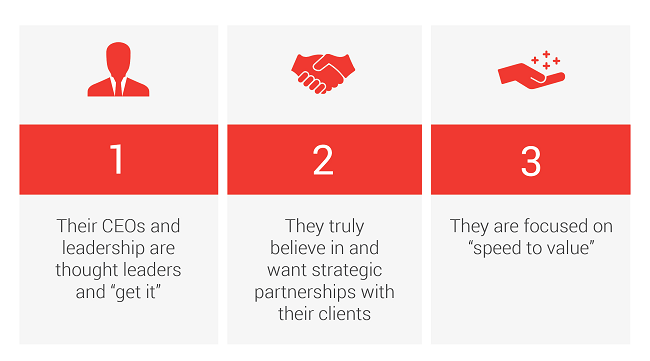
1. Their CEO’s and leadership are thought-leaders and “get it.”
Companies with CEOs that are good managers is nice. However, you’re looking for individuals and teams that are shaping the industry and “What Matters” for you.
2. They truly believe in and want strategic partnerships with their clients.
They hire and put top people working with you, bring innovation to you, and co-invest with you as they believe innovation is a win-win. If you win, they win. If you lose, they lose.
3. They are focused on “speed to value.”
It’s all about winning with your business, not theirs. Too often, suppliers (not partners) will sell you something, and whether you create value is your issue, not theirs. Strategic partners make value creation and speed to value their imperative.
What’s Next?
There are great opportunities out there to power innovation through analytics and digital transformation. Those that do will see their organizations thrive in a fast changing landscape and be ready for tomorrow.
So, remember, be crazy enough to think you can change the world:
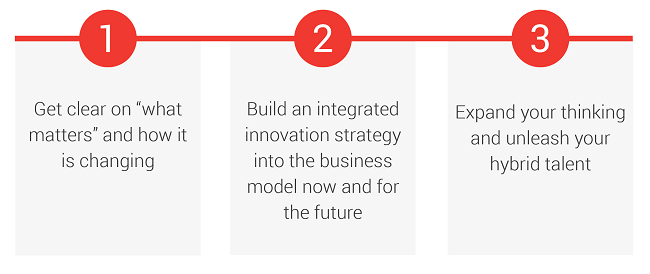
With the right approach to innovation, you can change the game. Get going.
About Author

Andy Walter
Fractal Analytics, Strategic Advisor
Andy Walter is a business results-driven professional with extensive experience in strategy, development, execution, and operations across Shared Services and IT. He led the Commercial Services & Delivery Organization (over 1500 IT and multifunctional professionals) for Procter & Gamble’s Global Business Services (GBS). He was responsible for IT & Shared Services for all Global Business Units and Markets around the world. His team was accountable for developing cutting-edge digital capabilities for Procter & Gamble to win “where it matters most,” with Consumers, Shoppers, and Retailers. This included all eBusiness, Consumer Services, BI/Analytics, Sales Force Solutions, Project Delivery, Business Process Services, and A&D / Company restructuring efforts.